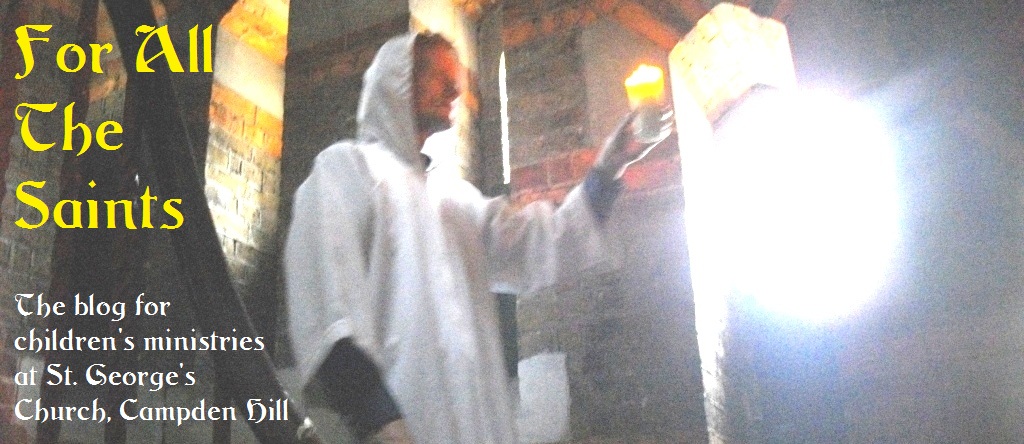I'd particularly like to thank Father Michael, Father Robert, Andrew Wells and the choir, Liz Webster (for use of her sewing machine), Alison and Ben Watson (for sandwiches at rehearsals), Emma Chorley, Megan Bonetti, and all the parents, as well as Gretchen Wolff Pritchard and Malcolm Houston for behind-the-scenes support.
We received dozens of positive comments about the pageant, and I felt it was a very rich and moving experience, with real spiritual power.
The cast was as follows:
Eve: Sydney Broxson
Adam: Richard Emanuel
Mary: Cordelia James
Joseph: Hector Worsley
Ox: Stan Pikovsky
Donkeys: Tom Lloyd, Thomas Chorley
Angel of the Lord: Margaret Houston
Jesus: Joseph Boundy
Angels: Tilly James, Boo O'Neill, Margot Worsley, Serena Janssens, Henry Thornton
Shepherds: Ted O'Neill (lead shepherd), Monty Brown, Ridley Brown, Hillary Brown, May Lyster, Flora Lyster, Becky Barrow, Robert Chorley, Benjamin Broxson, Emma Chorley, Alice Lloyd.
Sheep: Matilda Worsley, Naomi Boundy, Edward Chorley, George Lyster
Readers: Cordelia James, Stan Pikovsky, Margot Worsley, Benjamin Broxson, Sydney Broxson
Soloists: Tom Lloyd, Stan Pikovsky, Ted O'Neill, Matilda Worsley, Tilly James, Serena Janssens
Organist: Andrew Wells
Celebrant: The Rev. Robert Thompson
Deacon: The Rev. Michael Fuller
We have a few photos of the pageant to share with you - unfortunately, the camera's batteries were dying during the service, so there are only a very few, and the zoom function, which takes lots of power, wasn't able to be used.
"Go, tell it on the mountain / That Jesus Christ is born!"
Swapping over the real baby for the doll, once the baby had had enough.
"This have I done for my true love!"
The cast in place, ready to begin. That's Adam and Eve behind the altar.





